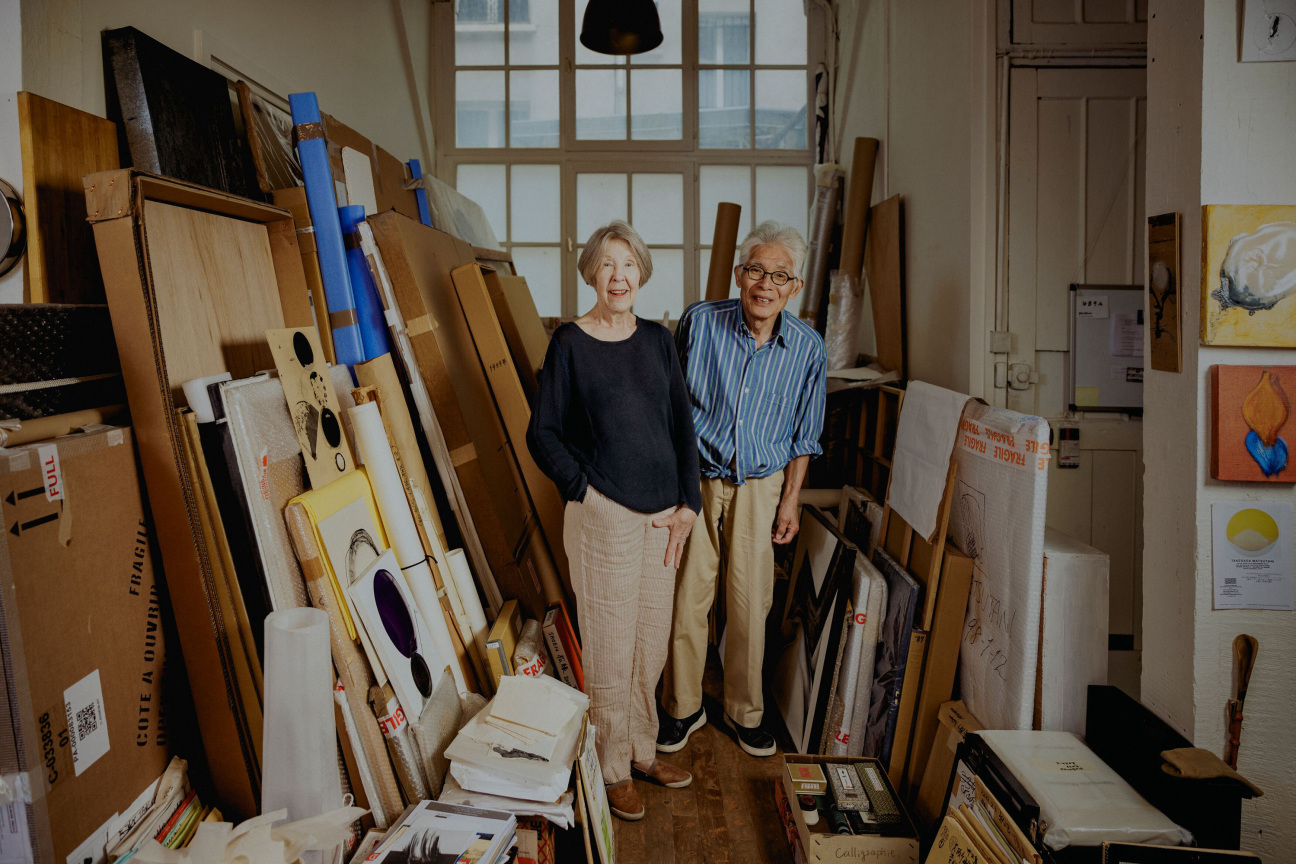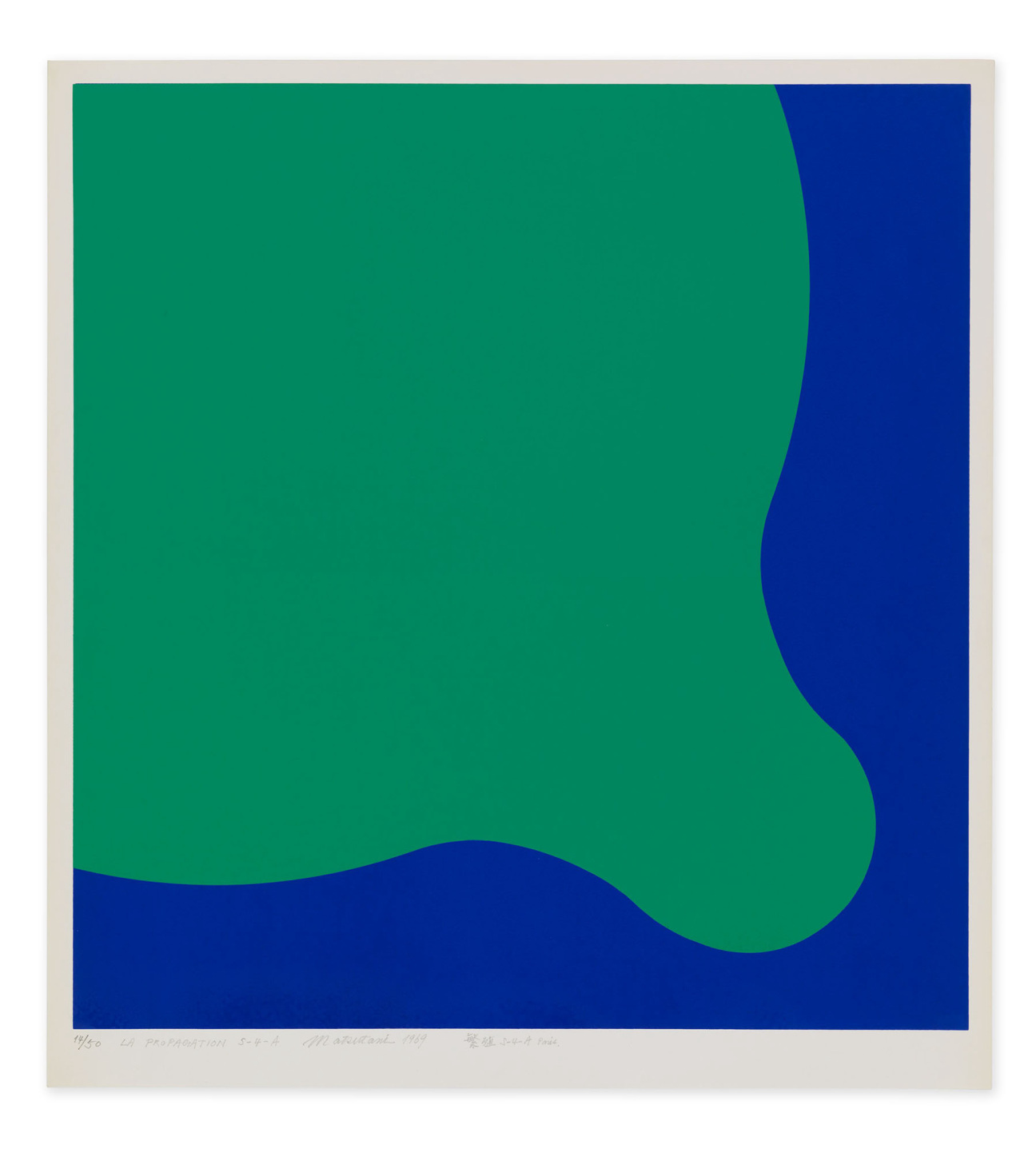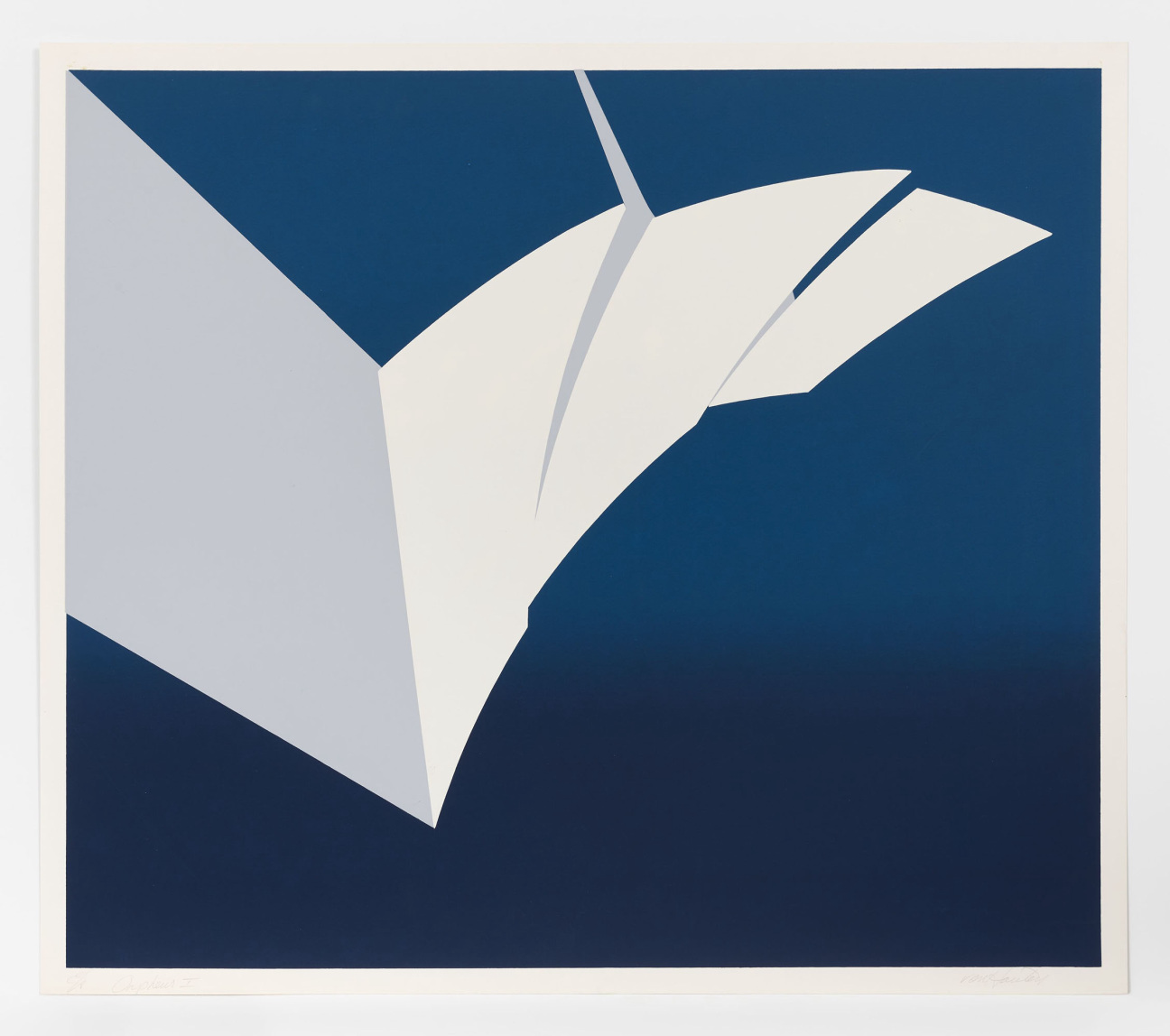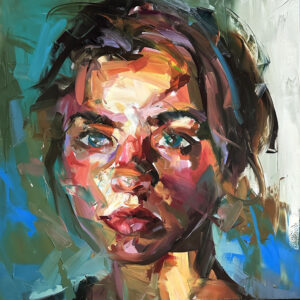
Printmaking is like riding a tandem bike: It demands high levels of coordination and precision, while allowing for the serendipity of the unknown to intervene. Like riding, the practice is also a partnership. Master printers work together to realize an artist’s vision, materializing their ideas with the tools of the trade—plates, screens, ink, and print presses, to name a few. It was in this communal environment that artists Takesada Matsutani and Kate Van Houten met in 1967.
Fifty-seven years later, the couple’s story is the subject of “Paris Prints 1967-1978,” a two-part exhibition at Hauser & Wirth that offers a glimpse into the dawn of this nearly 60-year partnership and their active years at the Atelier 17 print studio.
“Looking at the show, I think to myself, Oh, that’s another Kate from another time,” Van Houten tells CULTURED. The first part of the exhibition highlighted works made with the intaglio technique, such as etchings, aquatints, and engravings. In part two, which runs through April 20 in Chelsea, the focus shifts to hard-edge silkscreens, including examples of the vibrant, geometric compositions and experimental techniques that Matsutani in particular has become known for. “It brings great pleasure to see all these prints,” Van Houten chimes in. “They were so important to us at the time, and now I find them important in telling a story of how we met.”
Before moving to Paris in 1966, Matsutani was working in Japan as part of Gutai, the radical avant-garde group. Twenty-nine years old at the time, Matsutani arrived in Paris on a scholarship from the French government and soon began working at Atelier 17. Founded by Stanley William Hayter and renowned for its collaborations with artists like Salvador Dalí, Max Ernst, and Joan Mitchell, the experimental print studio was also remarkably cosmpolitan, having relocated to New York during World War II and returning to Paris a decade later.

Matsutani’s introduction to Atelier 17 was a revelation. “When I came to Paris, I was thinking in three-dimensions and objects. With printmaking, I began to think of flatness and learned how to translate this onto surfaces like mylar and copper plates,” he explains. “I knew of Atelier 17 and Hayter when I was in Osaka. I was very impressed by the prints they were making. That’s why I looked for them when I came to Paris.”
In his early etchings from the first part of the exhibition, Matsutani seems to be exploring this idea of dimension, flattening spheres and bulbous shapes into two-dimensional forms. One of the artist’s three-dimensional sculptures, Object-B-68, 1968, is also on view in both presentations. The white, totemic work consists of four circles stacked on top of one another. All but one circle protrudes like a swollen belly.
New Jersey-born Van Houten was already working at Atelier 17 when Matsutani showed up. “I was new to Paris and needed a job, so a friend suggested Atelier 17,” she recalls. “I didn’t know what printmaking was about, but I was impressed with Hayter and I was fascinated by what he showed me could be done with prints.”
Like Matsutani, Van Houten’s early prints include etchings, hers filled with fine lines of repeated patterns reminiscent of optical art. Joined by examples of copper and zinc plates, the first presentation offers insight into the technical processes. “Working with the materials is what drew me to printmaking,” Van Houten says. “That and the collaborative spirit. It’s hard to explain, but you just pick up ideas and methods from each other.”

After a few years of working with intaglio, Van Houten became interested in screen printing and opened her own studio in the early-1970s to further explore the rich, crisp lines and concentrated colors silkscreens afford—a focus of the Hauser & Wirth exhibition’s second chapter. Van Houten moved on from Atelier 17, but continued to collaborate with Matsutani, who had by this time become her partner. “I learned so much from her,” says Matsutani. “I loved hard edges, and silkscreen made this possible.” Matsutani even took an ambidextrous approach sometimes, creating a screenprint at Van Houten’s studio and finishing the work with an etching at Atelier 17.
While documenting their own artistic growth, the Hauser & Wirth shows also speak to personal stories and the enduring accessibility of prints. “There were many moments when we needed money, and prints were easier to sell,” remembers Matsutani. One work that proved financially successful is Japan Sea-5, 1978, a silkscreen featuring a cat arching its back. “That cat provided us with a meal for years,” quips Van Houten.
In the decades since Japan Sea-5’s coup, the pair have sustained their personal relationship but taken more individual paths professionally. Over the years, Matsutani has made a name for himself with his distinct abstract style that often incorporates glue and features vast expanses of the color black and meticulous brushwork. His work has been the subject of several solo shows, including a 2019 presentation at Centre Pompidou. Van Houten has also continued her multidisciplinary practice, working in painting, sculpture, and prints. Since 1996, she has been running her own independent publishing company, Estepa Editions. “We are of course still collaborating,” Van Houten reassures me. “We just made a valentine together, and we collaborate in conversations every night. Really, every relationship is a collaboration of some form.”
“Paris Prints 1967-1978" part two is on view through April 20, 2024 at Hauser & Wirth 18th Street New York outpost.










 in your life?
in your life?

